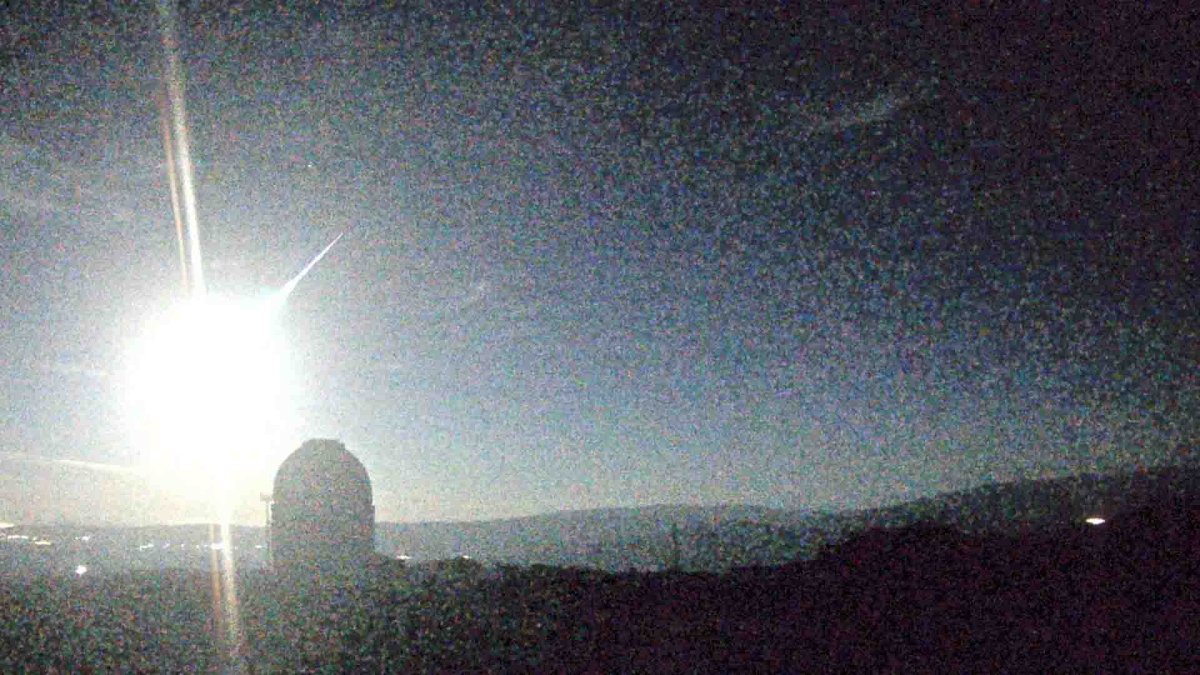This week, two asteroids — one big enough to destroy a city, the other big enough to wipe out civilization — will fly past our planet.
Don't panic.
Both have a zero percent chance of hitting Earth. And, depending on where you are in the world, you might even be able to see one of them.
The larger of the two, (415029) 2011 UL21, will pass 17 times the Moon's distance at 4:14 PM Thursday. It measures 2,000 meters long, but is too far away to be easily seen without powerful binoculars.
However, two days later, a smaller space rock known as 2024 MK will come significantly closer to humanity. At 9:46 a.m. ET on Saturday, it will pass close to Earth at 75 percent of its distance from the moon. If you have decent binoculars or good binoculars and your skies are clear, the 400- to 850-foot rock can be seen as a point of light on a starry night.
“The object is moving fast, so there must be some ability to detect it,” said Juan Luis Cano, a member of the European Space Agency's Planetary Protection Office.
Stargazers in the U.S., especially those further southwest, will be able to see the asteroid orbiting next to the planet. Those on top of Hawaii's Mauna Kea volcano will be well placed to watch the asteroid pass by at dawn. However, according to Andrew Rivkin, a planetary astronomer at the Johns Hopkins University Applied Physics Laboratory, residents of South America will have it easy.
Small asteroids and fragments of comets occasionally pass through Earth's atmosphere, creating a harmless light show. Many more chunks of rock and ice never reach the planet, often slipping between Earth and the Moon.
An asteroid the size of 2024 MK pulls this celestial needle less often. “Near-Earth asteroids are rare, but occur on decadal scales: this is the third of this century (that we know of),” Rivkin says in an email.
Anyone who hasn't seen MK 2024 needn't feel left out for long. On April 13, 2029, Apophis, a 1,100-foot-long asteroid, will fly by less than 20,000 miles above Earth's surface, closer than the orbits of geosynchronous satellites, meaning it will be visible to the naked eye.
These approaches are useful for planetary defense researchers. This week's asteroids will be detected by ground-based radars, which will allow accurate determination of their dimensions and paths.
“These measurements will greatly reduce uncertainties about their motion and allow us to calculate their trajectories in the future,” said Lance Benner, principal investigator of the Asteroid Radar Research Program at NASA's Jet Propulsion Laboratory.
The double flyby is also a fortuitous preview of Asteroid Day, which is celebrated on June 30, sponsored by the United Nations, to raise awareness of asteroid impacts.
In 1908, a space rock about 200 feet in diameter exploded in a remote part of Siberia, instantly leveling 800 square miles of forest, almost the size of the Washington, DC metropolitan area. It is called the Tunguska phenomenon because of the river that runs through the devastated region.
Although more are discovered every year, most near-Earth asteroids capable of destroying a city have yet to be discovered. Fortunately, a pair of telescopes under construction—the Vera C. The Rubin Multipurpose Observatory and NASA's Near-Earth Object Surveyor spacecraft—likely to find more.
Asteroid MK 2024 is twice as long as the Tunguska impact. Undoubtedly, the asteroid was discovered before its encounter with Earth and was hailed as passing by. But astronomers discovered the space rock on June 16.
“The case of MK 2024 is a reminder that there are many more massive objects to be discovered,” said Dr Cano. Space agencies have plans and technology to protect the planet from killer asteroids, but only if they find them before they find us.


:quality(85)/cloudfront-us-east-1.images.arcpublishing.com/infobae/R7OUOSEZUXRHPDXJ6LEX7ZP4MM.jpg)


